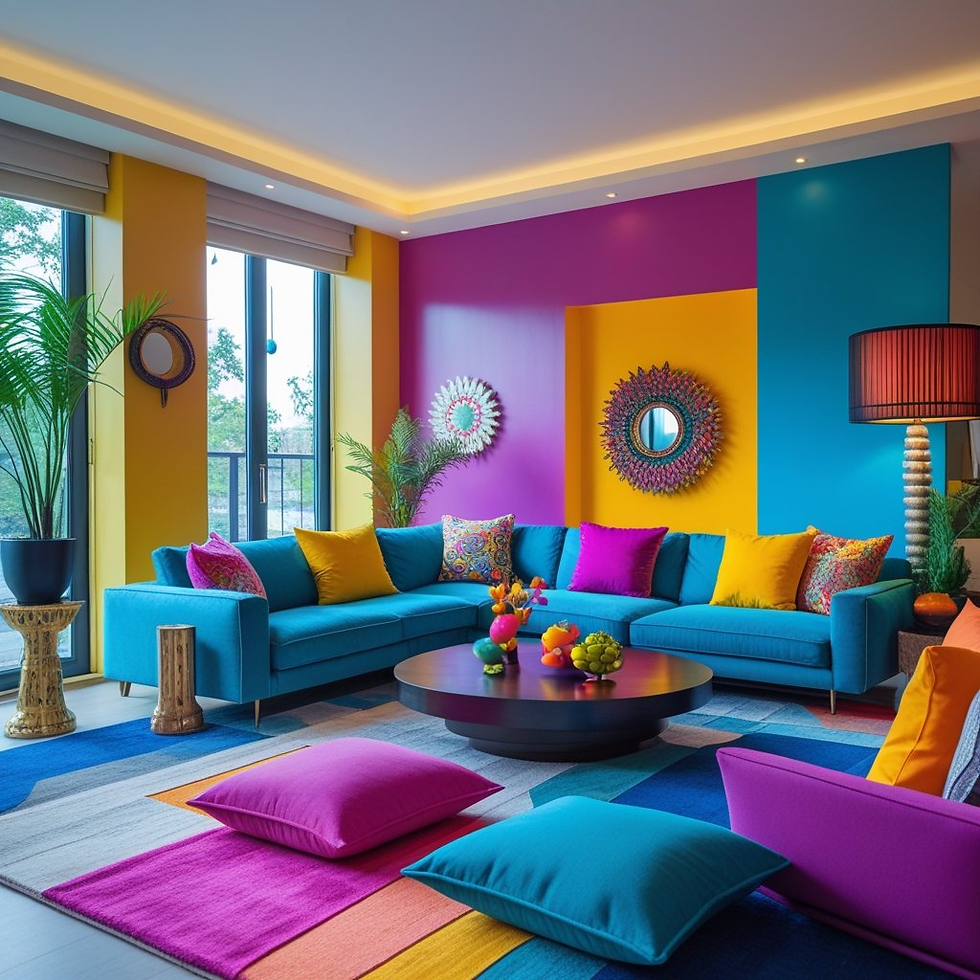How to Apply Color Psychology in Your Home for Mood-Boosting Spaces
- Staff Desk
- Aug 25
- 4 min read

Color does more than just cover a wall. It quietly sets the mood of a space, sometimes without anyone noticing. Think about your favorite room at home. Is it cozy? Calm? Maybe bright and energizing? That feeling isn’t accidental. The colors in that space are doing emotional work, shaping how the room lifts or grounds your mood.
This is the core of color psychology. Every shade holds emotional weight. Some energize. Some calm. Some invite conversation, while others tell the mind to slow down. But the question is, how do you use that to your advantage? How do you turn that knowledge into choices that make your home feel better every day? Well, that’s what this article is here to break down.
Read on!
Understanding Color Psychology
Color psychology explores how hues influence emotions and behavior. Knowing the effect of each color can help you curate spaces that promote relaxation, creativity, or focus. Here are some of the most common tones and how they shape a room:
Reds and Oranges: Warm colors energize and stimulate. They’re perfect for social spaces like dining rooms or living rooms where lively conversation is encouraged. However, too much red can raise stress levels, so using it as an accent can keep the mood balanced.
Yellows: Yellow is linked to joy and optimism. A soft butter yellow in the kitchen can brighten your mornings, while a vibrant mustard can invigorate a home office.
Blues and Greens: These cool tones promote calm and tranquility. Pale blues or sage greens work well in bedrooms or bathrooms because they help create a restful environment.
Earth Tones: Browns, creams, and muted terracottas evoke stability and warmth. They can make large spaces feel cozier. Combining a rich chocolate brown accent wall with light furnishings can ground an open living area without overwhelming it.
Picking Colors for Every Room
Once the psychology of color makes sense, the question becomes: how do you bring it into your own home? And that’s where it gets tricky. Because let’s be honest: blue alone can range from airy sky to bold navy, each sending an entirely different message.
The best way to start is with small swatches. Paint a few small squares right onto your walls, then check them in daylight, in evening light, and under lamps. You’ll notice undertones you might have missed in the store. Also, think about how one room flows into the next. A hallway or entryway shade should connect with the rooms around it rather than stand out awkwardly.
And if, after all this, the choices still feel overwhelming, don’t stress. Reach out to some professional house painters in your area. They have a trained eye for detail and years of experience with how colors behave under real-world conditions. They’ll walk you through undertones, natural light effects, and layout considerations to make the choice clearer.
Many, like Bay Valley Painting, even offer free estimates and bring eco-friendly, low-VOC paint suggestions. That way, you end up with a space that feels both beautiful and responsible.
DIY vs. Professional Painting
Now, once you’ve chosen the perfect paint, it might be tempting to think the hard part is over. Just grab a roller, put on some music, and start brushing away, right? The reality is a little different. While DIY painting can be fun for small projects, it often comes with challenges: uneven coats, streaks, roller marks, and the time-consuming prep that’s easy to underestimate.
That’s why larger or more detailed jobs are best left to the pros. Experienced painters bring training and precision to the table. They sand, patch, tape, and prep surfaces thoroughly before a drop of paint goes on. Corners are sharp, coats are even, and cleanup is part of the process. They also save valuable time. What might take you two weekends can often be done in a fraction of the time by a professional crew.
Styling Tips and Finishing Touches
Paint establishes the groundwork, but balance within the room brings it all together. Fabrics such as rugs, throws, and drapes complement wall colors and provide depth. Lighting plays just as crucial a role: warm light steers bold color soft, while cooler lighting outlines washed-out grays and blues.
Art comes into play big, too. One big, dramatic painting will break up a wall, or a small gallery of frames will provide a room with character. And plants. They can introduce life into a room, bringing balance and color regardless of the color of the walls. In smaller areas, potted plants or hanging plants work well without concealing real estate.
Final Thoughts
Colour does more than make a house look nice; it sets the mood for how you feel in it on a daily basis. Being knowledgeable about the psychology of color, applying it to planned uses, and with appropriate texture and finish, you can design spaces that reflect you.
And don't forget, the right choice isn't merely color, but application too. With a little planning and some smart guidance, your walls are more than capable of being beautiful; they can transform bland walls into mood-energizing backdrops for life.



Comments